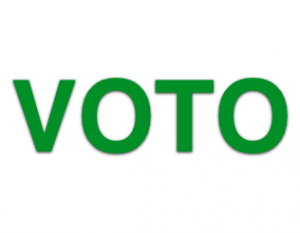Latino Voters Will Come Out In Record Numbers In 2012
 [Editor’s Note: The following is an editorial from NALEO.]
[Editor’s Note: The following is an editorial from NALEO.]
San Antonio, Texas — Latinos will turnout in record numbers in the next Presidential election, with at least 12.2 million casting ballots, according to projections released today by the National Association of Latino Elected and Appointed Officials (NALEO) Educational Fund. This analysis also reveals that Latinos will account for a significant share of the electorate in several states.
According to NALEO Educational Fund Executive Director Arturo Vargas, “Latinos continue to reshape the nation’s political map, and the Latino electorate will play a decisive role in Election 2012.” The NALEO Educational Fund projects that the Latino vote will increase 26% from 2008, and Latinos will account for at least 8.7% of the country’s voters.
California, Florida and Illinois are likely to see the greatest percentage increase in turnout since 2008. In three states – California, New Mexico, and Texas – at least one in five voters will be Latino, with the Latino share of the electorate in New Mexico reaching 35%.
Mr. Vargas continued, “While the Latino vote continues to increase with each Presidential election, much work needs to be done to fully engage Latinos in our country’s electoral process. In 2008, 19.5 million Latinos were eligible to vote, but half did not cast ballots, because they were not registered or did not turn out. The Latino electorate must make faster progress if America’s democracy is to thrive.”
The NALEO Educational Fund projections are based on Latino turnout in previous presidential elections. There are several trends that will affect the actual turnout of Latinos in 2012, including the following:
- The public dialogue about issues that are important to Latinos, such as the economy, healthcare, immigration and education. Latino voters will be watching closely to see how the candidates address these issues.
- The efforts made by the candidates and political parties to reach and engage Latino voters.
- The impact of the Latino youth electoral participation. Between 2004 and 2008, the turnout of eligible Latino voters age 18-24 increased from 33% to 39%, and in 2008, one in seven Latino voters was in that age group. Latino youth represent a major part of the nation’s future population and its electorate. By the 2012 election, approximately 2.4 million more U.S.-born Latinos will be over18 years old than in the 2008 election.
- The participation of Latino native-born and naturalized citizen voters. Typically, Latino naturalized citizens have higher turnout rates than the Latino native-born. In 2008, 54% of Latino naturalized citizens cast ballots, compared to 48% of the native-born.
Mr. Vargas concluded, “Both presidential candidates and political parties must actively work to engage Latino voters and address the issues they care about. This electorate has shown that it cannot be taken for granted by either party. Campaigns must enhance their strategies to reach all Latino voters, both native-born and naturalized. Latinos played a key role in the 2008 election; they will determine who is sworn in on January 20, 2013.”


